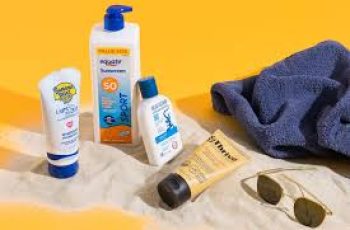
How Soybean Oil works in Skin Care Products
Soybean oil is a versatile natural ingredient that is very common in skin care products. Soybean can be found in products from moisturizers to lip balms and sunscreens and has very few side-effects or risks of use unless you are prone to acne. The anti-inflammatory, moisturizing, and anti-aging properties of soybean oil make it a great choice for dry, resistant skin types’ regimens. If you are looking for a well studied and proven ingredient for inflammation, aging, or dry skin concerns, take our quiz to see if soybean oil is right for you!
Skincare Products with Soy
Soybean oil is an extremely common ingredient in skin care products; it can be found in lip balms, moisturizers, sunscreens, and more. Here are just a few of our favorite products containing soybean oil. Be sure to take our quiz so you can find products specifically tailored to your skin type.
What is soybean oil made of?
Soybean oil contains a number of beneficial compounds for skin care, including barrier repairing unsaturated fatty acids, wrinkle reducing peptides, and proteins good for preventing cancer.
For skin care, the main component of soybean oil is linoleic acid. Linoleic acid is an essential fatty acid that is great for repairing a damaged skin barrier. Additionally, linoleic acid is an important component of many moisturizers. Linoleic acid is non-comedogenic and great for most skin types.
The second most common fatty acid in soybean oil is Alpha Linolenic acid (A-linolenic). A-linolenic is another essential fatty acid that is also good for barrier repair moisturizers. When consumed in your diet, A-linolenic is thought to improve heart health. (3) Some other fatty acids present in soybean include palmitic acid, a comedogenic fatty acid. This is why acne prone skin types should avoid soybean oil.
Isoflavones are also present in soybean oil. Isoflavones have been shown to impact the synthesis of estrogen in the body, in many cases increasing estrogen. Despite that feature of isoflavones, they have also been shown to play a role in the prevention of many cancers including breast, prostate, and colon cancers. (4)
Lecithins and Lectins are compounds that have demonstrated immunostimulating and anti-cancer properties in studies as well. (5)
Peptides, also found in soybean oil, are structural components of proteins, and are increasingly common in skin care products targeted towards reducing wrinkles and fine lines on the face. (1,6)
Phytosterols such as Beta-sitosterol, a compound with many of the same properties as cholesterol in skin care. It is great for barrier repair, inflammation treatments, and more. Be sure to check out our blog all about beta-sitosterol in skin care!
Ceramides are also present in soybean oil, another critical component of the skin barrier. (30) We also have a full blog dedicated to ceramides, which you can find here!
The last components we will consider for this article are saponins, a compound that is gaining an increase in interest for skin care products that is thought to express many biological benefits including anti-cancer and even anti-HIV benefits. There are more than 30 kinds of saponins present in soybean oil. (30)
Because there are so many active compounds within soybean oil, it is a highly versatile ingredient that has a place in many skin care products.
To find out if soybean oil is right for your skin type, take our quiz and get a personalized regimen recommendation!
How does it work?
Soybean oil is great for moisturizers, anti-aging products, and anti-inflammatory products because of its chemical composition.
Ceramides, Linoleic acid, A-linolenic acid, and Beta-sitosterol are wonderful for the purposes of inflammation and barrier treatments. (2)
Soybean oil contains all three essential parts of the skin barrier’s lipid matrix, free fatty acids, ceramides, and a cholesterol equivalent.
Repairing the skin barrier while supplying moisturizing fatty acids makes soybean great for inflammation and dry skin care.
The anti-cancerous phenolic compounds like lecithins, lectins, and isoflavones are great antioxidant ingredients. Antioxidants bind and eliminate free radicals on the skin that could otherwise lead to genetic damage or even cancer.
Antioxidants are important for the prevention and treatment of wrinkles on the skin. (1)
Additionally for anti-aging skin care, peptides are great for temporarily alleviating deep wrinkles or fine lines on the skin.
It is important to note that isoflavones bind to the estrogen receptors in the body, stimulating them to produce more estrogen. Over long periods of repeated exposure to soybean oil, it is possible that use of soybean oil in skin care can lead to a higher than desired level of estrogen in men. (9)
The skin types that would benefit the most from soybean oil are dry, resistant, wrinkle prone skin types who are also women. If you are a man and are thinking about using soybean oil in skin care, you may want to keep an eye on your estrogen levels.
Benefits
Soybean oil contains compounds that make it great for barrier repair moisturizer, a potent anti-aging ingredient, and a solid anti-inflammatory as well.
Linoleic acid, alpha-linolenic acid, ceramides, and beta-sitosterol are all great for repairing the skin barrier which helps prevent transepidermal water loss (evaporation of water from the face.)
The peptides found in soybean oil smooth wrinkles temporarily by basically bonding to existing proteins in the skin and creating a smooth surface. (16) This effect is not permanent.
The most exciting potential benefit of soybean oil is that it has demonstrated interesting anti-cancer benefits in studies. (10,11)
Most research on soybean oil is built around its use in diet, so more research on its effects in skin care is required, especially for cancer prevention.
Side-effects
The main side-effects attributed to the use of soybean oil in skin care are allergies and an increase of estrogen in the body.
If you are allergic to soybean oil in your diet, you are likely also allergic to it in skin care. Take note of the ingredients on your skin care labels to be sure you are avoiding your allergens.
Otherwise, it is important to be clear that soybean oil is comedogenic and will clog the pores of acne prone skin types. Be sure to avoid products with soybean oil if you often have acne.
As with many moisturizing ingredients, overuse and hyperhydration of the skin can eventually result in a change to the microbiome, creating an environment where acne causing and other bacteria might flourish. It is important to not moisturize your face if it is already oily.
Estrogen is the hormone responsible for many biologically female characteristics in the body, and some studies have found that overexposure of estrogen for men can result in various concerns like changes in sperm/fertility. (12)
All that said, organizations like the Cosmetic Ingredient Review Panel have found that soybean oil and its components are safe for regulated use in skin care products.
Soybean oil for acne
For Acne
Soybean oil is very comedogenic, meaning it Causes clogged pores.
If you have oily skin and often have pimples, this is simply not the right ingredient for you. I do not recommend using soybean oil for acne treatments, instead, consider some of these products for acne.
For Inflammation
The main benefit of soybean oil in skin care is as a potent anti-inflammatory and moisturizing ingredient. Products containing soybean oil can be used to treat a variety of inflammation based concerns such as a damaged skin barrier, eczema, or even psoriasis in some cases. If you have inflamed, dry skin, soybean oil could be a great ingredient for your skin care.
Inflammation is a complicated skin concern with many causes and various treatments based on the kind of inflammation. Be sure to check out our blog all about the science of inflammation to gain the tools you need to combat inflammation!
Soybean oil for sun protection
For Sun Protection
Soybean oil has subtle UV protection qualities due to its high concentrations of linoleic and alpha-linolenic acids. Both of these compounds are known to block UV radiation on the skin. (Additionally, the antioxidants present in soybean oil are great for eliminating free radicals caused by sun damage.
It is important to note that the use of soybean oil alone will not prevent or cure sun damage entirely on its own. Sunscreens that cover a broad spectrum of radiation are the best way to prevent UV damage on the skin. Soybean oil might be a common ingredient in a sunscreen, but it itself will not keep you safe from the sun. Be sure to use a sunscreen that’s right for your skin type when you shop! Find your Baumann Skin Type for the best recommendations on sunscreens!
For Skin Lightening
Studies have found that linoleic and alpha-linolenic acid are effective in lightening skin following sun damage (13).
High concentrations of linoleic acid have been shown to inhibit tyrosinase production in the skin, which results in fewer dark keratinocytes at the surface of the skin. It is not a myth that soybean oil lightens skin, it is supported by research. (14)
The best skin lightening products contain a combination of multiple skin lightening ingredients, and often use tyrosinase inhibitors, PAR-2 blockers, and an exfoliator in some combination. For a comprehensive list of our favorite skin lightening ingredients, check out this article!
Soybean oil
How Soybean Oil Affects Estrogen
Soybean oil can change the amount of estrogen in your body because it contains compounds called isoflavones which bind to and stimulate the estrogen receptors in your body. This is why it is often found in skin care to treat menopausal skin.
It is unclear how much soybean oil is needed to make a notable impact on estrogen levels because it varies from person to person, however many studies have shown an increase in estrogen following the use of soy. (15)
More research needs to be conducted that focuses specifically on the effect topical application of soybean oil has on estrogen production.
If you are concerned with an increase in estrogen in your body, you might want to avoid using soybean oil in your skin care.
Soybean oil for anti-aging
Anti-aging
Soybean oil helps with the prevention and treatment of aging skin through multiple mechanisms due to its versatile components such as peptides and antioxidants.
Peptides are an increasingly common addition to anti-aging products because they smooth the skin and diminish the appearance of fine lines and wrinkles. (1) The peptides in soybean oil have also been shown to aid in the synthesis of collagen, a crucial building block of the skin that gives it strength. (17)
Antioxidants bind free radicals on the skin that can otherwise lead to genetic damage and further wrinkles.
There are many kinds of anti-aging ingredients that treat and prevent wrinkles through various means; for a complete list of our favorite anti-aging ingredients categorized and explained, check out this blog.
Wondering which soy products are best for your skin? Let me help. Take the skincare routine quiz and we will help you build a custom skin care routine.


